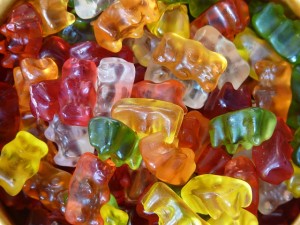MONDAY, 8 FEBRUARY 2016
 Who is craving some sugar right now?
Who is craving some sugar right now?Electrical activity in the brains of mice which had formed a habit was compared to that of mice which had not. The investigation focused in particular on the basal ganglia, an area of the brain responsible for controlling motor actions and compulsive behaviours. In this area, there are two neuronal pathways that transmit opposing ‘go’ and ‘stop’ signals which promote and prevent actions, respectively. New labelling strategies allowed the scientists to visualize the activity of dozens of neurons at the same time and so enabled the study of both pathways simultaneously.
Surprisingly, the experiments showed that both the ‘go’ and ‘stop’ pathways were activated strongly in the sugar-habit mice. Furthermore, in the non-habit mouse brains the ‘stop’ signal occurred first. In contrast, the neuronal circuitry of mice with habits was changed so that the ‘go’ signal was activated before the ‘stop’ message. Now the scientists are investigating whether this head start makes the animals more likely to engage in the habitual behaviour. They also demonstrated that the mice with relatively weaker ‘go’ pathways could unlearn the lever pressing behaviour more successfully.
The Duke University researchers hope that findings like these will one day lead to more effective medical treatments for conditions such as addiction or obsessive-compulsive disorder.
doi:10.1016/j.neuron.2015.12.032
Written by Raghd Rostom
